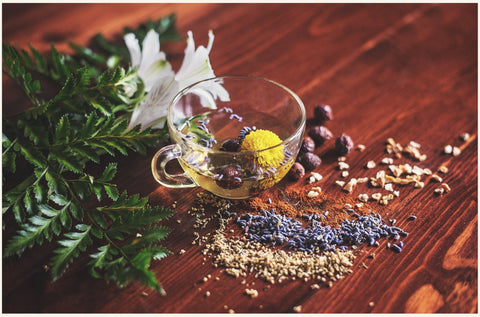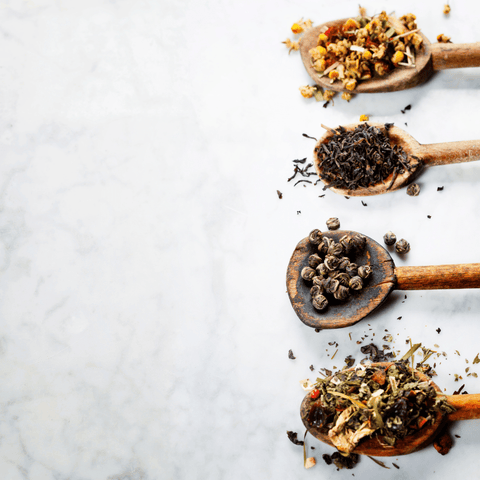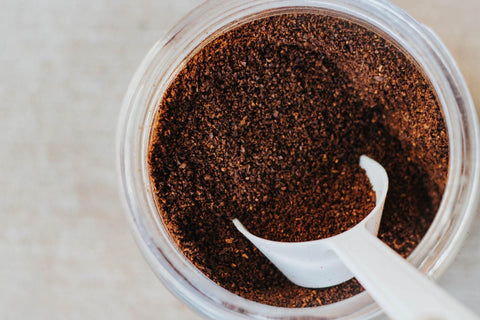Tea is the second most consumed beverage in the world, second only to water. There are many reasons for this. Camellia Sinensis is thought to have originated in Southwest China in the 3rd century. It's geographical roots put tea as first growing not only in China but in north Burma, Tibet and northeast India. From here, this herb spread to 52 countries and is enjoyed pretty much everywhere.
So why is tea still so popular after all of these centuries? Tea is not generally expensive, it’s readily available and has not changed much from its original flavor and quality. Tea also has a long history of being elemental in many societies and cultures. It’s steeped in tradition, yet has an endless variation of combinations and possibilities. It’s superior in its versatility and is easy to tailor the flavor and strength to the individuals liking. Tea is also consumed for its many healthy properties. It’s commonly known that tea is rich with antioxidants, boosts immunity, reduces inflammation and can reduce stress. It’s important to know that in this aspect, not all teas are the same.
1. White Tea:
Native to China and India, white tea is the least processed, making it one of the highest sources of antioxidants and is actually good for your teeth. It also has the least amount of caffeine.
2. Herbal Tea:
Close to a white tea, this is a blended tea that has no caffeine and is known for its calming effect. There are several types of herbal teas and each one has a specific property, but in general, herbal teas are used for muscle pains, cramping, headaches, digestive issues, joint pain and to aid in allergy relief.
3. Black Tea:
This tea has flavonoids that help reduce inflammation and boosts your immune system. Black tea can even be used as compress to ease skin rashes, cuts or inflammation.
4. Oolong Tea:
One of the top health benefits of Oolong tea is that it has I-theanine, which aids in preventing Parkinson's and Alzheimer's. It is believed to make you more alert while reducing anxiety. A concentration of polyphenols are also found in Oolong tea and are useful in decreasing type 2 diabetes risks and may even aid in preventing cancerous growths.
5. Green Tea
Studies show that green tea helps lower blood pressure, cholesterol, can slow certain types of cancers and is healthy for your skin. Matcha is a type of green tea that is made from entire leaves of a tree plant and is ingested that way, matcha has an even higher dose of antioxidants.
Several books have been written about tea and it’s ceremonies and cultural significance is still important today. This healthy beverage can be found anywhere and enjoyed in many ways, but a few interesting ones are described below.

China
China is credited with being the birthplace of tea; with historians believing that this ancient drink originated in the Yunnan Province of southwest China during the Shang dynasty in the 3rd century as a medicinal beverage. This province is said to have the world's oldest tea tree at 3.200 years old. Some historians say there is evidence that tea was consumed by Han dynasty emperors in the 2nd century BC. Nevertheless, Chinese tea traditions are some of the oldest in history and are still practiced in many homes. Perhaps the most traditional and ritualized one is Cha-Dao, which means the art of making tea. Cha-Dao is an ancient tradition and is at the center of the Gung Fu Ceremony.
Tools and Accoutrements:
1. A bamboo vase that holds a tea needle, a tea strainer, a tong, a measuring cup and sometimes a wooden collar (set into the open teapot to catch any leaves that may fall out.)
2. A linen or terry cloth towel, folded neatly.
3. A caddy, that should be bamboo, porcelain or a lacquered tin. NOTE: These are only meant for serving, tea leaves need to be stored in their original container for freshness.
4. A kettle, a small pitcher and the teapot. The kettle is used to heat hot water, for washing the cups, and for keeping the water warm. The hot water is poured into the small pitcher from the kettle before it is poured into the teapot. 5. Small cups and sometimes saucers.
The Ceremony:
Guests will smell the scent of the tea before partaking and the cups will be warmed with the first brew. Finally, the cups are arranged in a circle and the tea is poured in one continuous motion until all of the cups are filled. The tea is to be sipped slowly and it is tradition to use both hands. Once the tea is gone, it’s expected to breathe in the aroma of the tea leaves. It’s important to not touch any of the tea leaves with your hand, to keep the flavor of the tea pure. China has several types of tea but Jasmine, Oolong, Pu-erh (fermented tea) and Gunpowder are the most common tea types served at Cha-Dao. An assortment of light foods are commonly served alongside the tea, including nut plates, dried plums, pudding, an assortment of cookies, sunflower or melon seeds or Dianxin (Chinese cakes or desserts.)

England:
The United Kingdom is another country that is synonymous with tea and tea traditions. Tea had been a huge trading commodity for hundreds of years and in the mid 1600’s, the Dutch East India Trading Company brought this favored drink to British shores, where it was primarily for the upper class, as it was highly expensive. The traditional mid-afternoon tea that the U.K. is famous for, however, didn’t come around for another 200 years, when a Duchess decided to have a mini-meal around 4 that consisted of tea, small sandwiches and cakes. This trend quickly caught on and, thus tea rooms and tea gardens popped up anywhere the nobility would gather. Today, afternoon tea is for everyone and quite common.
Commonly Used Flavors of Tea:
The British will usually use a strong tea, with black being the most commonly used, followed by Earl Grey, Breakfast tea, Oolongs and some herbal teas. Using either loose leaf or tea bags is fine. Another common practice for English tea is to follow a proper steeping time. You put your tea in the cup, then pour the hot water and your tea should steep for 3-5 minutes, the longer the tea sits, the stronger the flavor. Traditionally, milk is only added to black tea, not green or herbal teas. Don’t microwave your water and if you have a cookie or biscuit, you should dunk it. Tea service will include finger sandwiches (sans crust), sconces, pastries, biscuits and other sweets. Did you know that afternoon tea and high tea are not the same? High tea was actually called that because it was common for the working class to have it at their dinner table with their meal after a hard day's work. Afternoon tea was taken as a social gathering in the mid afternoon by the upper class and would be enjoyed on lounge chairs and other low sitting chairs.

India
India is the world’s second largest producer and consumer of tea, this region produces many variants of tea, but it’s most popular one is the Chai tea. India’s well known Chai blends are usually black tea mixed with spices such as cinnamon, cardamom, pepper, nutmeg, cloves and ginger. India may not have all the elaborate rituals if China but tea is an everyday tradition and vendors, or Chai Wallahs, can be found on probably every street you will come across. The tea is sold in sustainable clay pots, made from local earth. As far as snacks to accompany your tea; expect spicy, fried or vegetarian options, with most of them having fillings. It’s not uncommon for the clay serving cups to be smashed after drinking!
The Practice of Ayurveda:
Ayurveda is an ancient alternative medicinal Indian practice that used tea for a wide variety of cures; some small, others more serious. Spices were added to diffuse the bitter taste of medicinal teas. While Ayurveda is not counted to be a legitimate health practice, it’s still quite popular in India and Nepal and tea is valued for its healthy components by most modern civilizations. Tea is a big part of this natural healing belief.

Morocco
Commonly referred to as Touareg, or Moroccan Mint Tea, this blend is a heavily sweetened green tea, or gunpowder green tea, that is steeped for at least 2 minutes and then generous amounts of washed spearmint leaves are added and sit for around 4 minutes. Tea is part of welcoming guests, friends and family and is to be served on a platter with an engraved teapot and serving glasses. Tradition says that the tea should be served 3 times.
What to Know About Moroccan Mint Tea:
1. Add sugar. This tea is supposed to be sweet, so your host will probably add sugar, which is to be added directly to the tea once it comes to a boil. It’s important to make sure the sugar is dissolved completely.
2. A traditional Moroccan teapot will have a built in strainer to catch the leaves from falling out, but you can place one over the teapot when pouring. The spout is traditionally long and curved.
3. The tea should be poured from a height to allow for a proper amount of foam to form on the surface.
4. Alternatives to spearmint are lemon verbena, geranium, sage or wild thyme.
5. This tea is usually served with a cookie that has almonds, but it’s not uncommon to have no snacks with this minty, sweet tea.
6. It is incredibly rude to refuse tea or any refills from your host.

Tibet
The origin of Tibetan tea, or Po Cha is not one of tradition, station or ceremony, but one of survival. Po Cha is a butter tea that is one of the oldest teas known to man. The Himalayas are very cold and the Tibetan diet can be very sparse, thus tea had to become a healthy option that offered warmth, energy and a lot of calories. This tea is made by boiling a brick of Pemagul black tea for many hours, until it’s almost black and then adding yak butter, salt and milk. Then the whole mixture is shaken.
The end result is more of a soup than a tea and the flavor is richer, heavier and less sweet. Often, this butter tea is poured over wheat flour to make a stew or served with bread. People have described this tea as salty with a nutty finish. If you desire something more traditional, Tibetan sweet tea is simple to make. Just boil black tea, then add milk and sugar, then heat the mixture for 5 minutes.
To make your own Po Cha at home boil water then add 2-3 tea bags, continue with a low boil while adding a quarter tsp of salt, stirring it in thoroughly, then remove the tea bags or strain the loose leaves. Next, add a tsp of powdered milk or a ⅓ to ½ of milk. Turn off the stove, then add the tea mixture along with 2 tbsp of butter to a churn or a large container with a lid, many people use a blender. Blend, churn or shake for 2 minutes, then serve while the tea is hot.
Yak Butter:
Did you know in the Himalayan culture Yak butter is a valuable commodity and is a sign of wealth and status? People will sell their Yak butter as a way to earn a living. It’s also said to be a healthy option as it has lots of healthy fats and is supposed to counter the diuretic effects of tea. Yak butter is also known to have high levels of antioxidant vitamins and probiotics.
Russia
During the 1600’s Russia was trying to develop a strong trading relationship with China and while the venture proved successful the trading route between the two countries was treacherous and long, causing the price of tea to be exorbitant. By the 1800’s tea became accessible to the masses and Russia developed its own tea traditions. Zavarka, is a loose leaf that is usually a strong black tea and brewed using a samovar, which is a tall metal urn that boils water, while the teapot sits atop of it. The tea is served in large mugs, but is not filled to the top; hot water from the samovar is added to the top to dilute it. While many Russians prefer their tea black, honey, sugar, milk and lemon will often be served alongside it. Serving zavarka without cookies or crackers is considered tea “naked” and is considered very rude.
Samovars
Samovars have become a staple to Russian tea and are found in almost every home, restaurant, office and train station. They come in many sizes, are usually made of some type of metal and are often deliberately decorated, sometimes even with paintings. In Russia, tea is served with just about every meal and will often be part of the desert, where people will have jams and chocolates with their tea.

Senegal
This traditional ceremony is commonly performed after a meal but can be performed at any family or friendly gathering. Known as ataya, it’s similar to Moroccan tea, as it also uses a bitter, strong Chinese green tea and is poured to make a thick foam head on top.
The Ataya in 3 Parts:
The ceremony is a 3 step process and each stage pouring is the same; the cups are sweeter each time as the fresh mint and sugar are added. The first cup (the most bitter) represents the love of your mother, the second is the love of your friends and the third cup, which is the sweetest, represents your true love.

Thailand
Thailand is famous for its amber colored iced tea or Cha-Yen, as the locals call it. At the end of the Chinese civil war in 1949, refugees fled to Thailand and brought their tea culture with them. Thailand locals made tea their own staple by mixing Ceylon or Assam tea with condensed milk, sugar and a variety of spices, then pouring it over a tall glass of ice. It’s spicy and sweet and much loved on hot days. For an ombre effect pour evaporated milk over the top. Modern Thai Tea Mix will make your tea appear orange or even red, until you add the milk and stir it. Some vendors will make it into a Frappe or even a Bubble Tea.
Spices to Put in Your Cha-Yen:
● Orange Blossom
● Tamarind (Ground is best)
● Star Anise
● Cinnamon
● Licorice
● Lime
● Mint

Pakistan
Although tea is a common beverage that is served as a courtesy, Pakistan is also home to Noon Chai, a blended tea that is served on special occasions and originated with the Kashmiri culture. Noon Chai is a green tea base that is rolled into balls and infused with such mixings as salt, milk, almonds, pistachio, spices and a pinch of baking soda, which gives this tea its pink color. The more casual version is called “Doodh Pati”, which is a milk tea and involves no water. This popular beverage is served with an assortment of local pastries, such as sheermal, a saffron flavored flatbread.
Did You Know?
● Noon Chai is also known as Shir Chai which means milk tea.
● Noon is a Kashmiri word that means “salt”.
● Sugar was not used in the original Noon Chai but is common now when served in restaurants and tea stalls.
● It’s common to see your tea topped with chopped nuts or pistachios
● The Noon Chai is not just for special occasions; over time it has become a regular part of a Pakistani breakfast.
Most countries around the globe have made tea part of their daily lives; whether for tradition, for its health benefits, or just to have a reason to gather. Tea is integral to many societies and some cultures keep a formal, traditional tea service; for instance, in Japan and Malaysia have heavily ritualized steps and practices. Likewise, Hong Kong tea is labor intensive, but the tea is taken in a more casual environment, where people of all classes gather around to tea for lively debates and discussions. New Zealand has adopted a tea service that mirrors the U.K.’s very closely, but keeps it elegant. While places like Iran have unique traditions. In this country, the tea is very strong and you don’t add sugar; instead you stick a sugar cube between your teeth and drink your tea through it.
What’s New in Tea?
Like all things, tea has changed to cater to changing tastes. One of the most popular ones in Bubble Tea. Bubble tea came about in 1988 in Taiwan when a product development manager of a teahouse took tapioca balls from her fen yuan dessert and dropped them into her tea. Soon, this idea took off and bubble tea is a favorite in Asia, Europe and the United States. Mocktail teas are also becoming quite popular. Mocktail teas take favorite mocktails and add tea flavors. People enjoy the flavor of tea mocktails and its health benefits. Some of people’s favorite tea mocktails are Matcha Mojito, Lavender Green Ginger Beer and the Marrakesh Mocktail.
Perhaps the fastest growing fad of tea beverage is the “blooming” or “flowering” tea. In this process, tea buds are hand sewn into a shape, like a heart, cone, rosette or sphere. Once the tea is infused, they will bloom or open into a different or larger shape. You don’t have to use one flower, some blooming teas have several tea buds that pop open to put on quite the show. YouTube has several videos of this art form. The taste is usually light or neutral but it can be fragrant.
No matter how you like your tea, or what benefits you get from sipping this ancient beverage, there is a tea experience out there that you should try!



